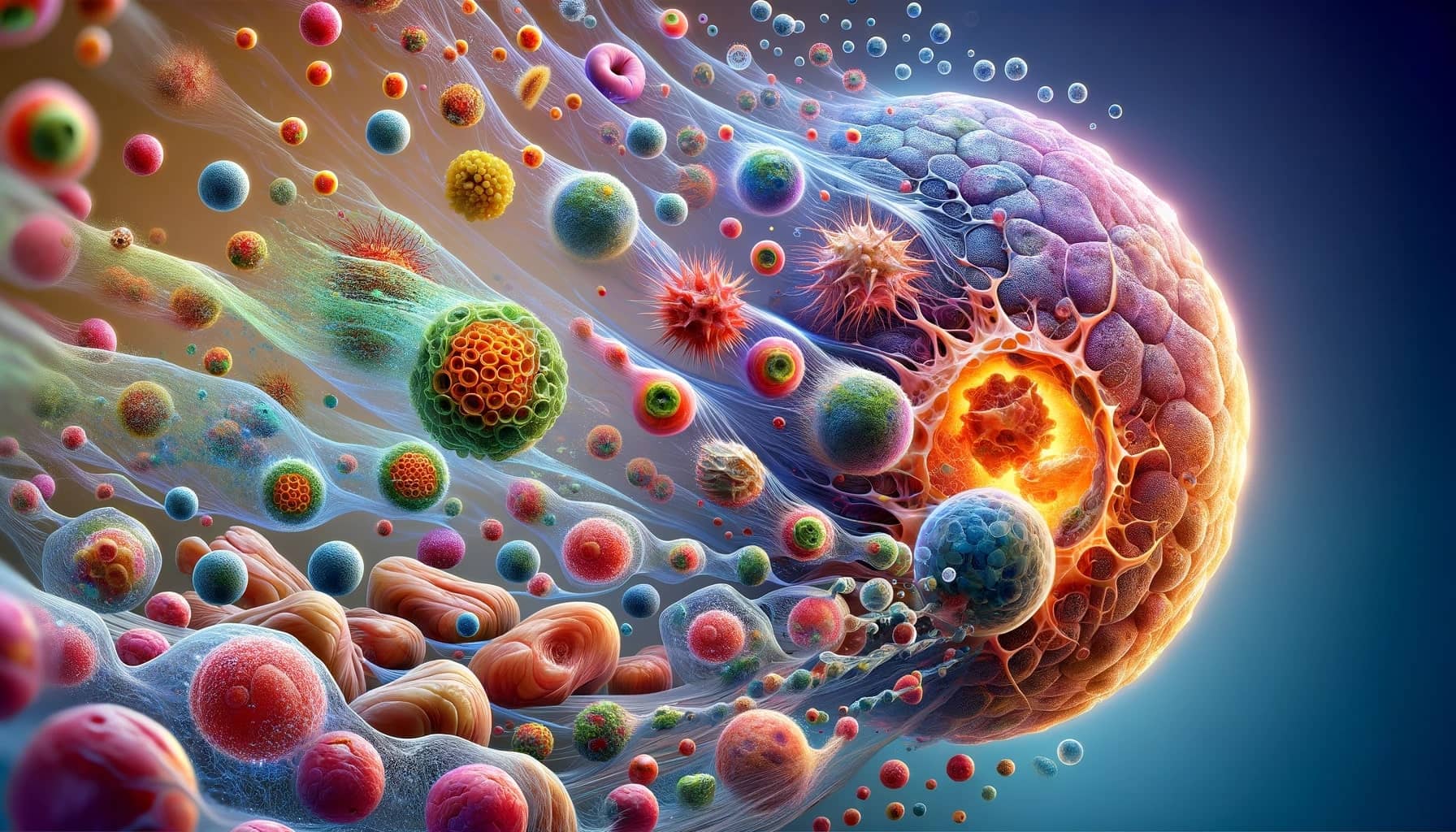
Inflammation in Aging: The Surprising Impact of Cytosolic DNA
Aging is a natural process that brings many changes to our bodies. One change that is not well understood is chronic inflammation. Recently, scientists have found that our own DNA, when it ends up in the wrong place in our cells, can cause this inflammation. Let’s explore this topic in simple terms.
How Our Cells Spot DNA Intruders
Our bodies have systems to find and fight germs, like viruses. These systems, known as “cytosolic DNA sensors,” are always watching for DNA that doesn’t belong. But sometimes, these sensors get confused and attack our own DNA that has accidentally moved to a different part of the cell. This mistake can cause inflammation.
A Case of Mistaken Identity Inside Cells: The cGAS-STING Pathway
Inside your cells, there’s a security system called the cGAS-STING pathway. It’s meant to find and attack foreign DNA. However, as we get older, this system sometimes wrongly identifies our own DNA as an invader. This error can lead to ongoing inflammation.
Misplaced DNA: A Problem for Aging Cells
Normally, our DNA is safely stored in the cell’s nucleus. But sometimes, bits of DNA leak into the cytoplasm, the area around the nucleus. When this happens, our cells may wrongly set off inflammation. This is especially harmful as we age and can lead to various health problems.
Mitochondrial Mayhem: When Cell Powerhouses Cause Inflammation
Mitochondria, the energy factories of the cell, have their own DNA. With age, this DNA can get damaged and leak into the wrong places in the cell, causing our defense systems to react. This reaction can lead to inflammation, which is part of the aging process and related diseases.
Aging and DNA Damage: Fueling Inflammation
As we get older, our DNA can become damaged more easily, leading to errors and mutations. When this damaged DNA gets out of the nucleus, it can trigger our defense systems and cause inflammation. This process might be a key factor in aging and the development of diseases common in older people.
Senescent Cells and Inflammation: Old Cells Causing Trouble
When cells become old, they enter a state called “senescence.” They stop dividing but don’t die. These old cells can cause inflammation by releasing certain chemicals. This is linked to the problem of misplaced DNA in the cells, adding to the complexity of age-related inflammation.
The Bigger Picture: Linking Aging and Inflammation
Understanding chronic inflammation in aging is a growing field of study. The discovery that our own DNA can mistakenly trigger inflammation is a significant step in understanding aging. Scientists are working to learn more about how these processes lead to age-related diseases, hoping to find new treatments or ways to prevent the negative effects of getting older.
This exploration into the world of chronic inflammation and cytosolic DNA provides a clearer picture of the aging process. It highlights the importance of ongoing research in unlocking the secrets of our bodies and finding ways to maintain health and wellness as we age.
